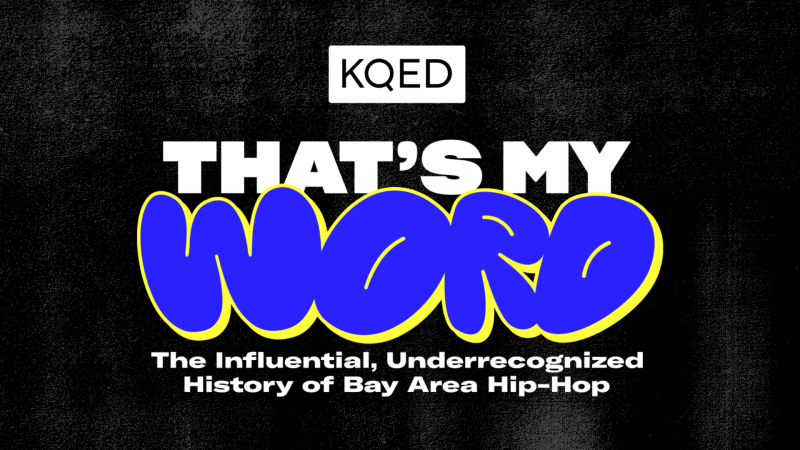KQED’s Year-Long Multimedia Project is the First of Its Kind to Document the Influential, Yet Underappreciated Legacy of Bay Area Hip-Hop
“Celebrating 50 years of hip-hop with KQED and That's My Word! The legacy. The slang. The things we done brought to the game. Shout out to KQED and the Bay Area — that's my word.” — Keak Da Sneak
Tupac. MC Hammer. Too Short. E-40. Mac Dre. The Coup. Souls of Mischief. Del the Funky Homosapien. Keak Da Sneak. The Bay Area boasts a roster of hip-hop artists that rivals nearly any other region in the country. But unlike New York, Los Angeles, and Atlanta, for instance, Bay Area hip-hop has never received its proper due in the canon – until now. To commemorate what is widely considered hip-hop’s 50th anniversary, the KQED Arts & Culture team introduces That’s My Word, an ambitious, year-long multimedia project exploring the Bay Area’s crucial contributions to the evolution of hip-hop.
Hip-hop has become the dominant American musical genre and cultural force this century, and Bay Area hip-hop sits at a distinct intersection of music, politics, social movements and independence that have contributed to hip-hop’s DNA. Featuring articles, profiles and interviews with iconic and up-and-coming Bay Area artists, playlists, an interactive historical timeline, videos, a podcast series, education curricula and a series of live events, That’s My Word makes the compelling case that the Bay Area is the missing piece of the hip-hop story.
Over the next year, That’s My Word will take audiences through the history of Bay Area hip-hop – and even its pre-history. We’ll give you inside stories behind the records that have defined Bay Area hip-hop – and some of the more overlooked ones as well. We’ll also go beyond the music to show how artists such as Boots Riley and Tupac forced direct social action; how pioneers like Pam the Funkstress and the Conscious Daughters changed the game for women in hip-hop; and how self-made entrepreneurs such as Too Short, E-40, Hieroglyphics and others created a new blueprint for independent artists.
